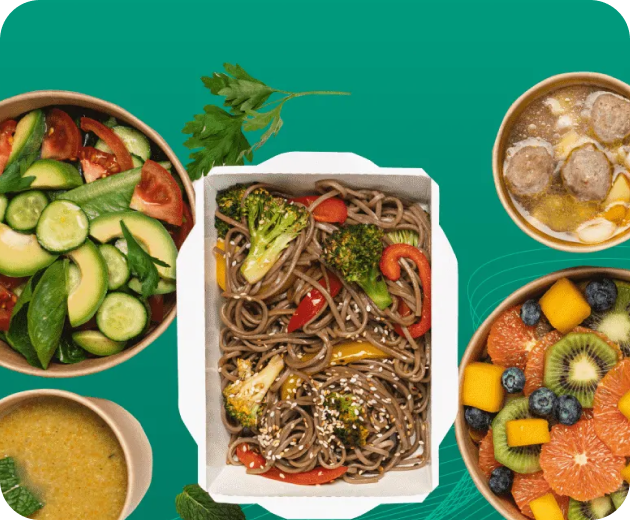How Menu Innovation Drives Restaurant Success
Menu innovation is a crucial aspect of the foodservice industry and plays a significant role in driving restaurant success. With an ever-changing consumer landscape, it’s essential for restaurants to constantly adapt and evolve their menus to stay relevant and competitive.
Let’s take a closer look at how menu innovation can positively impact restaurant success and what it takes to create a successful menu.
What is Menu Innovation?
Menu innovation is the process of crafting new and exciting dishes or enhancing existing ones to adapt to evolving consumer preferences and market trends. This goes beyond simply adding new items; it also involves refining current offerings to elevate the dining experience.
In the dynamic restaurant landscape, embracing menu innovation is essential for success. A creative menu filled with engaging dishes not only delights customers but also fosters a thriving business.
Far from being just a buzzword, menu innovation is a critical component of success in the highly competitive restaurant industry.
What’s the Difference Between Menu Innovation and Menu Ideation, and How Do They Collaborate?
Menu ideation is the brainstorming phase where chefs and restaurant owners generate ideas for new dishes or menu improvements.
This is the creative process where culinary innovations take shape. On the other hand, menu innovation is the execution phase where these ideas are tested, refined, and eventually introduced to the menu.
Both processes are crucial and work hand in hand. Without menu ideation, there would be no fresh ideas to implement. Without menu innovation, these ideas would never make it to the customer’s plate.
Why is Menu Innovation Important?
Foodservice menu innovation is all about introducing exciting new dishes and presenting them in creative ways to keep your customers engaged. It’s a powerful tool for boosting sales and staying ahead of the competition.
- Customer Satisfaction: Introducing new dishes keeps the menu exciting and gives customers reasons to come back.
- Competitive Edge: Staying ahead of menu trends allows a restaurant to stand out in a crowded market.
- Adaptability: Being able to quickly respond to changing consumer preferences helps in maintaining relevance.
Why Innovate?
- Trends & Market Appeal: Capitalize on popular trends (like vegan options) to attract new customers.
- Competitive Differentiation: Stand out by offering unique dishes your competitors don’t.
- Loyal Customer Surprises: Keep your regulars excited with new offerings alongside their favorites.
- Reaching New Demographics: Attract new clientele by introducing dishes that appeal to their preferences.
How Does Menu Innovation Help You Grow Sales?
Diners prioritize food! According to Yumpingo, it is 5 times more important than service and 8 times more than ambiance for satisfaction.
Yet, menu innovation can be intimidating. It’s time-consuming and requires balancing creativity with cost.
Challenges include lengthy development, managing costs for new ingredients, and ensuring menu clarity even with changes. However, 84% of restaurants are innovating. Why?
Menu innovation directly impacts sales growth in multiple ways. Innovative menus attract media attention and word-of-mouth referrals, leading to increased foot traffic. They also encourage repeat visits from customers eager to try new items.
Additionally, menu innovation can lead to higher average check sizes as customers are willing to spend more on unique and exciting dishes.
Gathering dish-level feedback is key. This helps tailor menus for optimal engagement and reduces the risk of wasted ingredients.
How Menu Innovation is Changing
The rise of technology, particularly AI, is transforming menu innovation. Tools like Tastewise allow restaurants to analyze vast amounts of consumer data to predict menu trends and identify potential culinary innovations.
This data-driven approach ensures that new menu items are not just creative, but also aligned with what customers want.
For example, AI can help identify emerging flavor profiles or dietary preferences, allowing for precise and strategic menu planning.
The ever-evolving landscape of menu innovation is embracing new tools like Artificial Intelligence (AI).
Cutting-edge platforms offer valuable insights for restaurants looking to leverage this technology. Industry resources explore how AI can be used to create targeted menus for specific occasions like “Using AI to Design Your Pride Menu.”
Beyond menu design, broader analyses delve into the many ways AI is revolutionizing the restaurant industry.
From optimizing inventory to predicting future trends, AI offers exciting possibilities for restaurants, and menu innovation is just one area where this technology is making a significant impact.
Menu Innovation Trends
Staying on top of menu trends is crucial for successful menu innovation. Some current trends include:
- Sustainability: Consumers are increasingly looking for eco-friendly and sustainable dining options.
- Health-Conscious Choices: There is a growing demand for healthier menu options, including plant-based dishes.
- Global Flavors: Incorporating international cuisines and exotic flavors can attract adventurous eaters.
Menu Innovation Tips
- Leverage Data: Use consumer data platforms like Tastewise to understand what your customers want.
- Experiment and Test: Before rolling out new items, test them in small batches to gauge customer response.
- Stay Flexible: Be ready to adapt and change your menu based on feedback and emerging trends.
- Involve Your Team: Encourage chefs and staff to contribute ideas and feedback during the menu ideation process.
FAQs
There’s no one-size-fits-all answer, but it’s important to strike a balance between keeping things fresh and offering menu staples customers love.
Consider seasonal changes, quarterly specials, or introducing limited-time offers to keep your menu exciting without overwhelming your customers.
Restaurants can gather customer feedback on menu innovation through several effective methods. Short surveys after meals offer quick insights into specific dishes or overall preferences.
Social media polls engage audiences and reveal which new dish ideas resonate most. Small focus groups provide detailed feedback on potential menu additions and improvement suggestions.
Additionally, a digital comment card system allows customers to easily leave feedback on their dining experience.
Beyond AI tools, technology provides various solutions to improve restaurant operations. Inventory management systems optimize stock levels to reduce waste and ensure essential ingredients for new dishes are available.
Menu design software creates visually appealing and user-friendly menus. Additionally, integration with online ordering platforms makes it easy for customers to explore offerings and try new dishes.
Conclusion
Menu innovation is a powerful tool for driving growth and staying competitive in the restaurant industry.
By understanding the difference between menu ideation and menu innovation, leveraging technology, and staying on top of menu trends, restaurants can create exciting and relevant dining experiences for their customers.
The future of menu innovation lies in the ability to combine creativity with data-driven insights, ensuring that every new dish not only delights but also meets the evolving preferences of diners.




